
Europe’s Art Treasures Revealed: Part II
A 10-week course: 4th October - 13th December 2024. Fridays 11.00AM-12.45PM (UK)INTRODUCTION
Join our new 10-week online course and visit some of Europe’s greatest art treasures, with live, exclusive online access to prestigious exhibitions, art collections and museums. Includes an exclusive broadcast from the upcoming Drawing the Italian Renaissance exhibition at the King’s Gallery; a livestream tour of Rubens’ altarpieces brought to you direct from Antwerp Cathedral, and a live broadcast from the Spada Gallery in Rome where you will learn about the exciting Artemisia Gentileschi research project at the museum, engaging in Q&A with the conservators.
The lectures and visits are all different from Part 1 earlier this year, so the course can be enjoyed by both newcomers to Art History in Focus as well as students who have attended the previous module. Lectures are given by distinguished curators, museum directors, art historians and expert guides.
Join our welcoming community of art lovers from all around the globe! Tune in from anywhere in the world or catch up on demand with recordings.
Our unique, interactive classes combine lectures with livestream guided tours, broadcast direct from museums around Europe. We are the only organisation in the world to have been allowed special live access to many of the world’s greatest galleries and cultural sites. Click here to read a review of a recent course.
We look forward to welcoming you!
CONTENT
Each week you will explore a different collection, museum or work of art.
 We have arranged exclusive access to a number of museums in Europe including the King’s Gallery in London, enabling you to enjoy a special, out-of-hours guided tour of the upcoming Drawing the Italian Renaissance exhibition. This major exhibition brings together over 160 works on paper by artists such as Raphael, Leonardo da Vinci, Michelangelo and Titian. Art History in Focus is the only organisation to have been given permission to film a guided tour of this important show, which will certainly be a highlight of this term’s course.
We have arranged exclusive access to a number of museums in Europe including the King’s Gallery in London, enabling you to enjoy a special, out-of-hours guided tour of the upcoming Drawing the Italian Renaissance exhibition. This major exhibition brings together over 160 works on paper by artists such as Raphael, Leonardo da Vinci, Michelangelo and Titian. Art History in Focus is the only organisation to have been given permission to film a guided tour of this important show, which will certainly be a highlight of this term’s course.
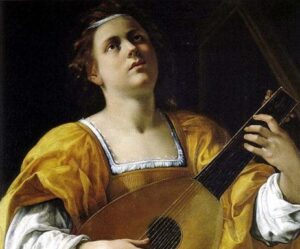 There will also be a livestream broadcast from the Spada Gallery in Rome. The museum contains an exquisite art collection, the nucleus of which was amassed by Cardinal Bernardino Spada in the 17th century. Highlights include masterpieces by Orazio and Artemisia Gentileschi and Andrea del Sarto, as well as a famous trompe l’oeil perspective designed by the Baroque architect, Francesco Borromini. Your guided tour will be led by art historian Dr Maria Grazia Barbieri and there will be a personal welcome from museum director, Dr Adriana Capriotti. Two paintings by Artemisia Gentileschi in the Spada Gallery have recently undergone important technical analysis, the results of which will be published soon. The conservators will join the session, enabling you to take a closer look at these two precious masterpieces and to ask the team questions about their groundbreaking new findings.
There will also be a livestream broadcast from the Spada Gallery in Rome. The museum contains an exquisite art collection, the nucleus of which was amassed by Cardinal Bernardino Spada in the 17th century. Highlights include masterpieces by Orazio and Artemisia Gentileschi and Andrea del Sarto, as well as a famous trompe l’oeil perspective designed by the Baroque architect, Francesco Borromini. Your guided tour will be led by art historian Dr Maria Grazia Barbieri and there will be a personal welcome from museum director, Dr Adriana Capriotti. Two paintings by Artemisia Gentileschi in the Spada Gallery have recently undergone important technical analysis, the results of which will be published soon. The conservators will join the session, enabling you to take a closer look at these two precious masterpieces and to ask the team questions about their groundbreaking new findings.
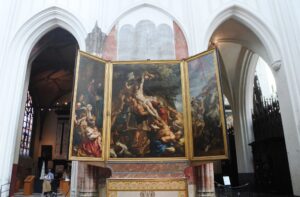 The course will include the world’s first livestream tour of Antwerp Cathedral, giving you a chance to study four magnificent altarpieces by Peter Paul Rubens, including his seminal masterpieces, The Raising of the Cross and The Descent from the Cross. The live broadcast will be led by Stephan van der Meer, who will lead you on a journey of discovery through one of Northern Europe’s most important Late Gothic buildings. We are grateful to the diocese of Antwerp for enabling us to film this live tour.
The course will include the world’s first livestream tour of Antwerp Cathedral, giving you a chance to study four magnificent altarpieces by Peter Paul Rubens, including his seminal masterpieces, The Raising of the Cross and The Descent from the Cross. The live broadcast will be led by Stephan van der Meer, who will lead you on a journey of discovery through one of Northern Europe’s most important Late Gothic buildings. We are grateful to the diocese of Antwerp for enabling us to film this live tour.
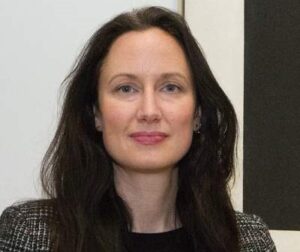
Before the creation of the National Gallery in 1824 and indeed for decades after, the Ashmolean held the most important collection of Renaissance and Baroque works in the country. Building on an earlier talk focusing on the Museum’s Renaissance collection, Professor Jennifer Sliwka, Keeper of Western Art at the Ashmolean Museum, joins us for a lecture dedicated to a selection of the best sculpture and paintings from the Ashmolean’s Baroque holdings. These include a monumental bronze Mercury by Adriaen de Vries, an ivory Venus made by Georg Petel for Peter Paul Rubens and paintings by Rubens, Anthony van Dyck and Claude Lorrain.
 A highlight of the course will be the world’s first livestream tour broadcast from the Museo Fortuny, one of the most evocative museums in Venice. This is the largest private Gothic palace in the city which was once the residence of Mariano Fortuny y Madrazo, a true uomo universale of the late 19th century – artist, fashion designer, inventor, photographer and the creative genius behind Fortuny Fabrics which still creates luxury fabrics today. The museum, which reopened to the public in 2022, is a tribute to his eclectic and opulent taste, filled with paintings, furniture, printed fabrics, photographs and costumes. Your exclusive guided tour will be led by art historian and expert guide, Dr Luisella Romeo.
A highlight of the course will be the world’s first livestream tour broadcast from the Museo Fortuny, one of the most evocative museums in Venice. This is the largest private Gothic palace in the city which was once the residence of Mariano Fortuny y Madrazo, a true uomo universale of the late 19th century – artist, fashion designer, inventor, photographer and the creative genius behind Fortuny Fabrics which still creates luxury fabrics today. The museum, which reopened to the public in 2022, is a tribute to his eclectic and opulent taste, filled with paintings, furniture, printed fabrics, photographs and costumes. Your exclusive guided tour will be led by art historian and expert guide, Dr Luisella Romeo.
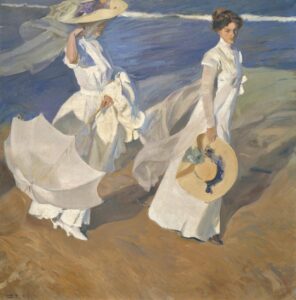 A lecture will be dedicated to the exquisite Museo Sorolla in Madrid, which was the studio and home of Joaquín Sorolla y Bastida, one of the most popular Spanish artists of the 20th century, famously known as “the master of light”. Admired in his lifetime for his magnificent portraits and powerful canvases which often display an interest in contemporary social themes such as child poverty, he is however most famous today for his charming beach scenes, vivid seascapes and landscapes which conjure up the warmth and luminosity of Mediterranean colour.
A lecture will be dedicated to the exquisite Museo Sorolla in Madrid, which was the studio and home of Joaquín Sorolla y Bastida, one of the most popular Spanish artists of the 20th century, famously known as “the master of light”. Admired in his lifetime for his magnificent portraits and powerful canvases which often display an interest in contemporary social themes such as child poverty, he is however most famous today for his charming beach scenes, vivid seascapes and landscapes which conjure up the warmth and luminosity of Mediterranean colour.
 The Centraal Museum in Utrecht is famous for its extraordinary collection of works by the so-called Utrecht Caravaggisti. Artists such as Gerard van Honthorst, Hendrick Ter Brugghen and Dirck van Baburen travelled to Rome in the early 17th century, where they became fascinated by the spectacular chiaroscuro and powerful dramatic story-telling found in the works of Caravaggio. On returning home, they sought to imitate his style, turning Utrecht into an important artistic centre. Many later Northern artists including Rembrandt were in turn much influenced by their Caravaggesque pictures. This week’s lecture explores highlights of the collection.
The Centraal Museum in Utrecht is famous for its extraordinary collection of works by the so-called Utrecht Caravaggisti. Artists such as Gerard van Honthorst, Hendrick Ter Brugghen and Dirck van Baburen travelled to Rome in the early 17th century, where they became fascinated by the spectacular chiaroscuro and powerful dramatic story-telling found in the works of Caravaggio. On returning home, they sought to imitate his style, turning Utrecht into an important artistic centre. Many later Northern artists including Rembrandt were in turn much influenced by their Caravaggesque pictures. This week’s lecture explores highlights of the collection.
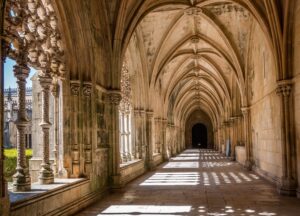 There will also be a lecture dedicated to Portuguese architecture, led by historian and guide Inês Valencia. The Jerónimos Monastery in Lisbon is a magnificent example of the Portuguese Gothic Manueline style. Built from 1501 under the orders of King Manuel I, it was populated by monks of the order of St Jerome who would pray for his soul and provide spiritual guidance and assistance to sailors. Indeed Vasco da Gama and his men spent the night in prayer here before departing on their famous expedition to the Orient in 1497. We will also explore the beautiful monastery of Batalha, a jewel amongst the medieval monuments of Portugal. Built on the orders of King John I, it became his final resting place, alongside his English wife Philippa of Lancaster. The monastery stayed active for almost 200 years, serving as a learning location for many of the architects and sculptors who would then apply their knowledge to other religious sites throughout the country.
There will also be a lecture dedicated to Portuguese architecture, led by historian and guide Inês Valencia. The Jerónimos Monastery in Lisbon is a magnificent example of the Portuguese Gothic Manueline style. Built from 1501 under the orders of King Manuel I, it was populated by monks of the order of St Jerome who would pray for his soul and provide spiritual guidance and assistance to sailors. Indeed Vasco da Gama and his men spent the night in prayer here before departing on their famous expedition to the Orient in 1497. We will also explore the beautiful monastery of Batalha, a jewel amongst the medieval monuments of Portugal. Built on the orders of King John I, it became his final resting place, alongside his English wife Philippa of Lancaster. The monastery stayed active for almost 200 years, serving as a learning location for many of the architects and sculptors who would then apply their knowledge to other religious sites throughout the country.
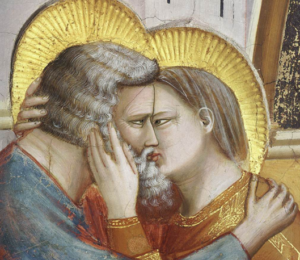 The frescoes by Giotto covering the walls of the Scrovegni Chapel in Padua constitute one of the most important picture cycles in the history of art, and represent a major turning point in Western painting. Why was this? A lecture dedicated to the chapel examines what exactly makes Giotto’s art so innovative, taking examples from the Scrovegni chapel and comparing them to similar scenes depicted by artists working within the previously predominant Byzantine tradition. We trace the history of the building and its patron, Enrico Scrovegni, exploring each of the three cycles contained within: The Life of Joachim and Anna, The Life of the Virgin and The Life of Christ. In these moving and often powerful frescoes, Giotto encourages us to look at familiar Biblical scenes in a new light, thanks to his emphasis on a new humanistic approach.
The frescoes by Giotto covering the walls of the Scrovegni Chapel in Padua constitute one of the most important picture cycles in the history of art, and represent a major turning point in Western painting. Why was this? A lecture dedicated to the chapel examines what exactly makes Giotto’s art so innovative, taking examples from the Scrovegni chapel and comparing them to similar scenes depicted by artists working within the previously predominant Byzantine tradition. We trace the history of the building and its patron, Enrico Scrovegni, exploring each of the three cycles contained within: The Life of Joachim and Anna, The Life of the Virgin and The Life of Christ. In these moving and often powerful frescoes, Giotto encourages us to look at familiar Biblical scenes in a new light, thanks to his emphasis on a new humanistic approach.
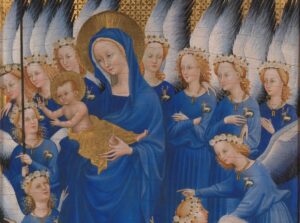 The final lecture is dedicated to one of the most exquisite medieval paintings in Britain. Ever since the mysterious and exquisite diptych known as The Wilton Diptych was acquired by the National Gallery in 1929 it has provoked heated debates regarding the painting’s possible author, function and provenance. Who are the characters represented? What are they trying to tell us? What can the painting tell us about medieval England at the turn of the 15th century and why it has come to represent the quintessential example of a style known as International Gothic? Through the lens of the Wilton Diptych this lecture will examine medieval patronage, saints and kingship unearthing the many hidden signs and symbols which have, through technical examination, revealed themselves to us in recent years.
The final lecture is dedicated to one of the most exquisite medieval paintings in Britain. Ever since the mysterious and exquisite diptych known as The Wilton Diptych was acquired by the National Gallery in 1929 it has provoked heated debates regarding the painting’s possible author, function and provenance. Who are the characters represented? What are they trying to tell us? What can the painting tell us about medieval England at the turn of the 15th century and why it has come to represent the quintessential example of a style known as International Gothic? Through the lens of the Wilton Diptych this lecture will examine medieval patronage, saints and kingship unearthing the many hidden signs and symbols which have, through technical examination, revealed themselves to us in recent years.
PRACTICAL
– All lectures and museum broadcasts are live and interactive, allowing you to ask questions throughout. Siân and all her expert colleagues are known for their informative but informal approach, combining erudite commentary with an entertaining and approachable delivery. The sessions, streamed on Zoom Webinar, will enable you to gain special access to museums and galleries whilst at the same time providing a wonderful opportunity to travel virtually from home.
– A full course outline and reading list will be emailed to all attendees approximately one week before the first session. The date of each lecture described above will be confirmed in the outline. Students also receive an informal weekly newsletter with news, reading suggestions, recipes and website links.
– Live streamed sessions are on Friday mornings and run from 11.00am – 12.45 (UK time). There is no session on 8th November (half-term).
– Tune in from anywhere in the world or enjoy a recorded version if you cannot watch live. A link to the recording will be sent soon after the end of the session if you cannot attend, enabling you to watch on catch up after the session any time until Monday evening at midnight (UK time). Please note that recordings are only available to those who miss a live session.
– You are most welcome to join the course at any point however, please note that you will only be able to see the recording from the previous session if you join after the course start date.
– All guided tours use the most up-to-date technology to provide you with the best possible virtual experience. You will feel as though you are exploring the museums yourself with the running commentary given by our guides, admiring details of the artworks in high resolution as we move around the rooms.
– The cost includes museum entrance fees and filming permits. Our visits will also support both galleries and individuals working in the cultural sector, and a percentage of the course price is also reserved for charitable donations.
– Please refer to the Further Information panel below for booking details.
– Please book at least 48 hours before the course commences in order to receive your course documentation and log-in details in good time, thank you.
TESTIMONIALS
Here are just a few comments following recent similar courses:
“I wanted to let you how much I’ve enjoyed these lectures. You and your guest lecturers have exceeded all expectations. Your knowledge, technical skills and presentation all combine to keep me enthralled every Friday morning – Bravo!”
“Thank you for such a wonderful course. Every week’s lectures and visits have been a delight .. and have made Friday mornings the highlight of the week. I shall be signing up for the next and look forward enormously to more Friday mornings of bliss!”
“The format works really well and the lectures are excellent … it feels really special to be allowed to be in the galleries and churches live. This is the first we have done with Art History in Focus but it won’t be the last!”
“Thank you so much for another beautifully presented course with wonderful choices of music and your follow-up Monday email, with lots to inspire further… Travel and galleries and museums are difficult for me, so I very much appreciate particularly the live visits.”
“I absolutely love your courses Siân! I am learning so much about art, history and the world .. but above all it is your unique style that is so enchanting and keeps me coming back for more! As an expert in your subject you have great knowledge but also the gift of making your lectures accessible to a wide range of participants through your wonderful use of language and lovely sense of fun. Thank you!”
“ I wanted to thank you very much for such a great educational course. I attended classes through the recording as I am an Australian resident and found this such a game changer for me. It gave me the possibility to participate in class even though broadcast from London. You and your expert lecturers imparted such a wealth of knowledge and I loved the virtual tours.”
“Your course is splendid – the combination of lectures and virtual walks/visits works brilliantly.”
“It is marvellous to be able to enjoy, and marvel at, the pleasures of art, the galleries, the whizzing round Europe, from my armchair! Thank you again for your wonderful lectures, your knowledge, and your lovely, lively lecture delivery.”
“Your absolutely brilliant lectures have been a real highlight of this year. I cannot thank you or praise them enough”.
“Your recent course was another triumph. Not only do I have unique access to buildings and works of art which I could not otherwise see, but also fascinating lectures from such an erudite cast of guides”
“I just wanted to say thank you so very much again for this wonderful course. I have just finished watching the last video and am so grateful… These sessions have been an absolute treat, I learned so much and really appreciate the chance to travel vicariously and witness such marvels even from home”
***
Art History in Focus is proud to have initiated the concept of online tours in many major European museums and historic sites. We are delighted to have developed these collaborations which continue to raise important funds for the galleries and cultural sites as well as those working in the cultural sector.
Further Information
Participation
1. BOOK.
Click on the gold “Book This Course/Event” button on the right hand side now, fill in the online booking form and pay online. You will be notified automatically by email once your booking has been accepted.
Please ensure you enter your email address correctly, as your Zoom link will be sent to this address, thank you.
The participation fee is £155 per person, if making bookings for a number of people please provide their email addresses when booking them as separate participants. The fee includes “virtual visit” fees to sites visited as well as donations to cultural institutions in need of support.
2. DOWNLOAD
Download ZOOM once you have booked – please print/download the instructions in this downloadable link and read them carefully. Zoom works best when using Google Chrome.
3. REGISTER
You will receive an email approximately 24-48 hours in advance of the event asking you to register.** This is a privacy function enabling only registered participants to attend. After registering you will automatically receive the Zoom log in link – please keep this safe
** Please note that these details are sent out in office hours, so if you book on a weekend you may not receive them until Monday. You must register with the same name that you have booked under, otherwise you may not be able to watch. If you have not received your email confirmations, please check your ‘deleted items’ and ‘junk mail’ folders or click here for advice.
4. JOIN
Join the event at least ten minutes before it is scheduled to start, to ensure everything is working.
If you are not able to watch at the time it is live-streamed, you can still book online, as above. You do not need to advise us if you can’t participate live, don’t worry! You will be contacted after the event has been broadcast with instructions on how to watch on catch up (until Monday at midnight UK time). Please note, the recording is only available to those who have not been able to participate live and the viewing window cannot with regret be extended, for copyright purposes.
Please refer to our Terms and Conditions for booking this event. We regret that we are unable to offer technical support with Zoom but tips can be found in the attachment. If you would like to book more than one event, please book separately for each lecture that you would like to attend, thank you. If you are booking for more than one person, it is important that you include their email address so that we can send them the lecture link too. We regret we are unable to offer refunds but don’t worry if you are not able to attend, as we will send you the recording link.
